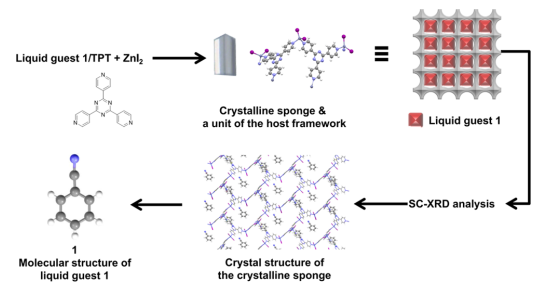USTC Introduces Crystalline Sponge Method into Undergraduate Course Proposal
The crystal sponge technology is a revolutionary technique, which enables the direct and precise determination of the molecular structure of liquid and gas targets. The technique uses a special network complex to selectively absorb liquid or gas target molecules and order them over long distances, thus achieving a breakthrough in determining the precise structure of liquid or even gas molecules by conventional single crystal X-ray diffraction technology. The remarkable technology is recognized as a subversive breakthrough to the traditional single crystal structure analysis technology.
However, due to limitations like experimental reagent toxicity and theoretical knowledge reserve in this work, this technology has not been successfully applied to undergraduate experimental teaching.
Professors from the Chemistry Experimental Teaching Center of the University of Science and Technology of China (USTC) of Chinese Academy of Sciences (CAS) have designed an overall laboratory experiment with reaction conditions and characterizations friendly for students to perform and managed to expose undergraduates to the crystalline method, the cutting-edge technique.
The results were published Dec. 8 in the Journal of Chemical Education of the American Chemical Society, which marks the first USTC chemical education teaching research paper published in the top international education journals.
Prof. LI Lingling, Prof. ZHU Pingping and Prof. ZHANG Qingwei from the Chemistry Experiment Teaching Center of USTC select this technology from a large number of cutting-edge research achievements. In order to enable undergraduates to understand and master this important technology, the team transformed the crystal sponge technology into a safe, universal and easy-to-use undergraduate teaching experiment for the first time through systematic adjustment and optimization of experimental conditions and overall teaching design, and completed 3-semester experimental teaching. The teaching experiment achieved high-quality training results, winning unanimous recognition from students and teaching supervisors.
The teaching practice has proved experiment helpful to update students’ understanding of crystallization technology and liquid organic compound structure analysis. It improves students’ innovative thinking, and provides strong technical support for their future development in organic synthesis, pharmacology and other fields.

